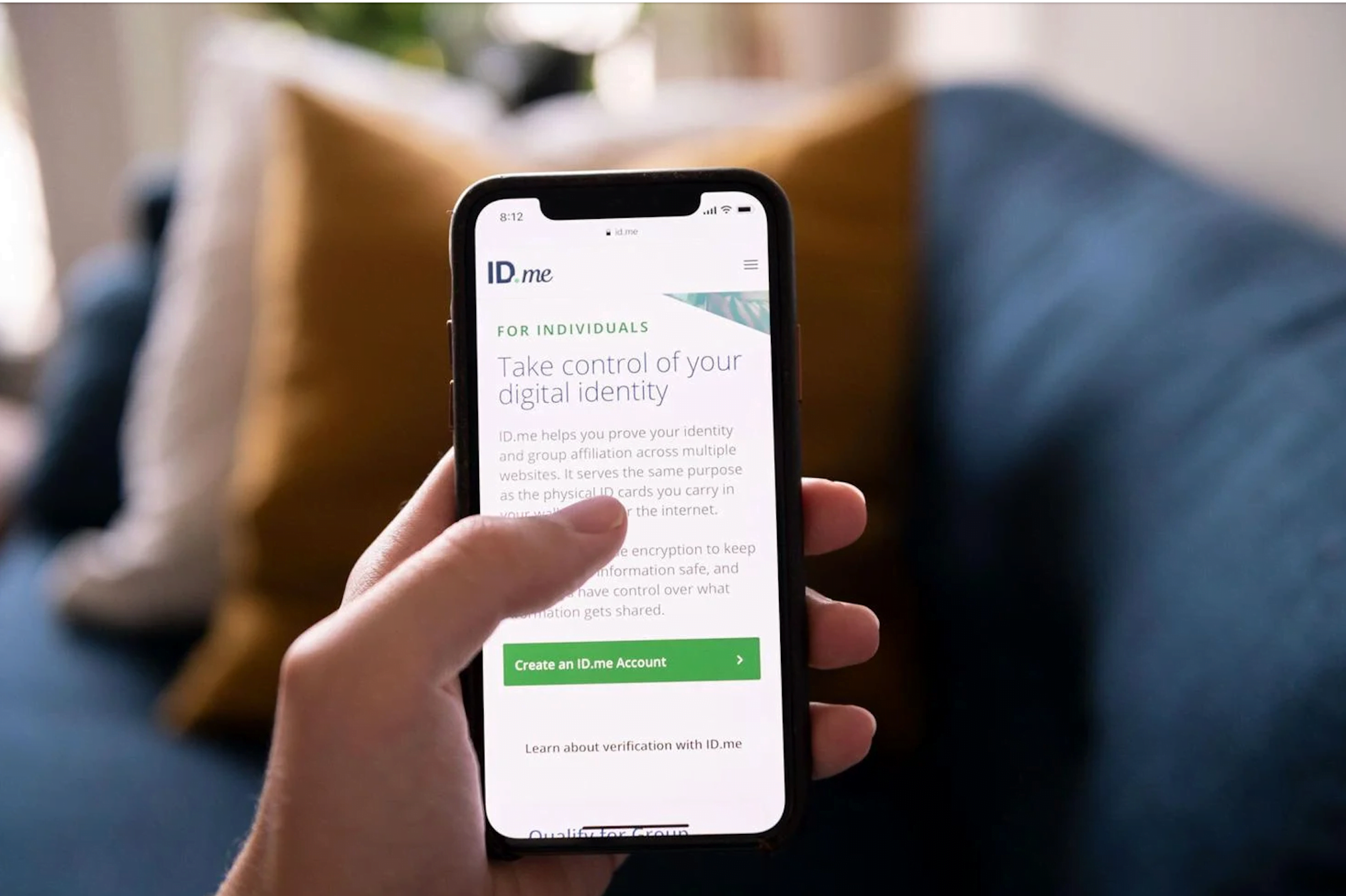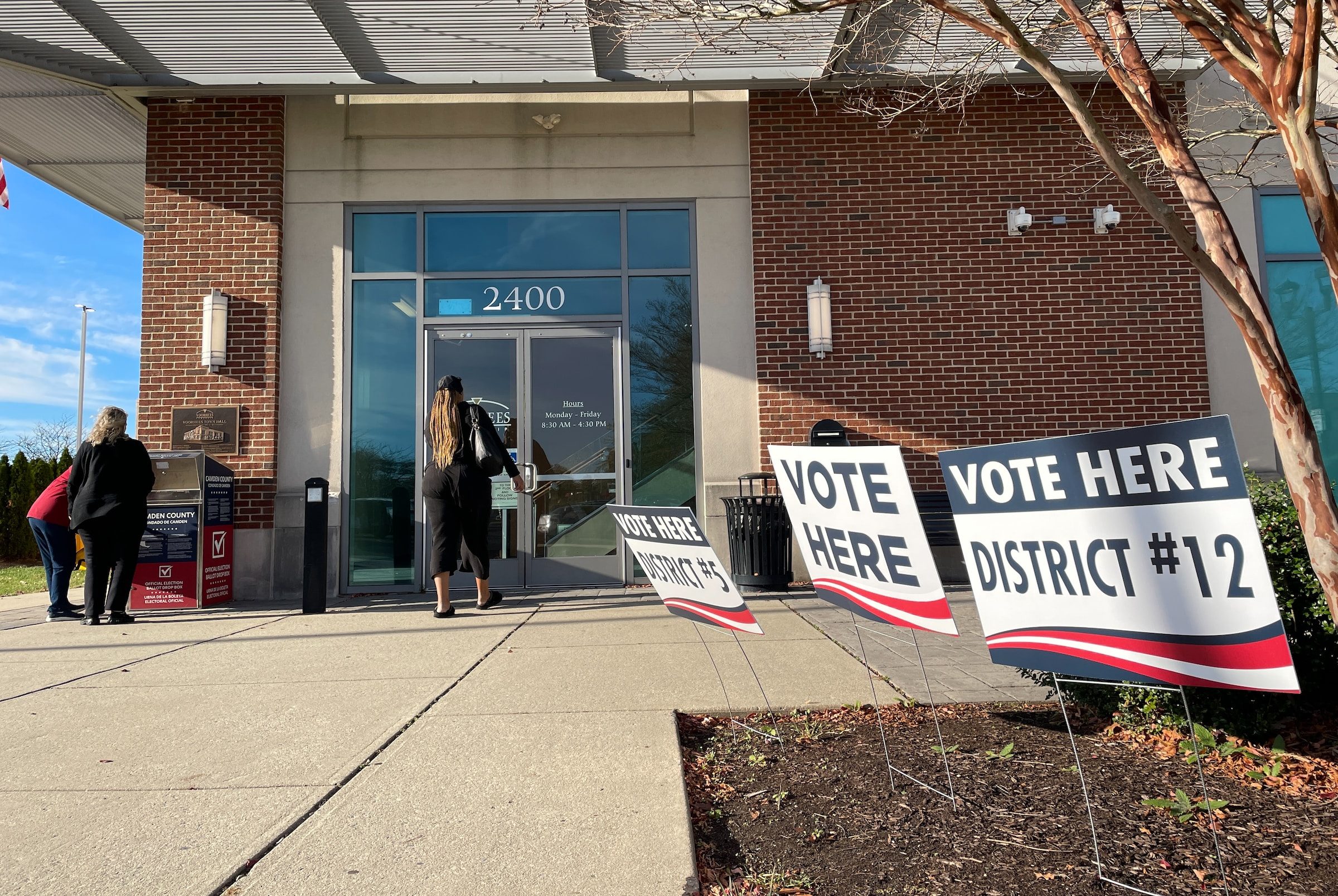
November 21, 2023
Understanding Individual U.S. Political Donations by Employer
TL;DR
- Segmenting individuals’ political donations by employers reveals that many companies have strong “blue” or “red” leanings, while others are “purple.”
- The 2020 election cycle with headliners Trump vs. Biden showed distinct patterns, with massively increased donation levels, and some companies “swinging” from blue to red, or vice versa.
- These insights may have implications for understanding the 2024 U.S. election cycle.
Akin to understanding “soccer moms,” we sought to understand individual and corporate political donations, segmented by organization/employer, as an alternative way to understand political donation (and presumably voting) patterns. To do this, we used data from OpenSecrets with political donations segmented by employer over four election cycles (2016, 2018, 2020, and 2022). Most of our efforts focused on major retail companies and restaurant brands, whose employees will often be public-facing and perhaps more “in touch” with the general public and the communities within which they work. We’ve identified three major patterns in the data:
- Specific employers can be consistently “blue,” “purple,” or “red,” and this can even differ among close competitors in the same industry. Political donation leanings are difficult to predict from just an employer name a priori.
- The 2020 cycle (Trump vs. Biden) was marked by a massive increase in individual-level political donations across retail, restaurants, and most other companies. Typically, this reverted to pre-2020 levels in the 2022 cycle.
- For some companies, the 2020 cycle led to a switch in partisan leaning due to the influx of individual donations. We haven’t yet found this for any company besides retailers or restaurants.
The Political “Color” of Companies: Political donations at companies can consistently average blue, purple, or red
Collectively, employees of a given company have a political leaning that becomes apparent in their donation patterns. For example, employees at companies such as Apple and Starbucks consistently gave more than 90% of donations to Democrats. Similarly, Shoprite and Publix lean very red, supporting Republican candidates most of the time. Not all companies had a clear partisan tendency; for example, CVS and Walmart are “purple” companies, with average donations in the range of 40-60% red/blue.
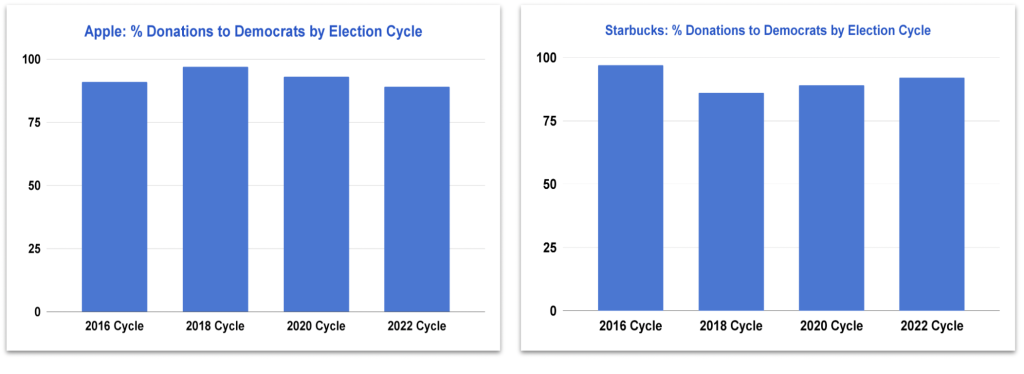
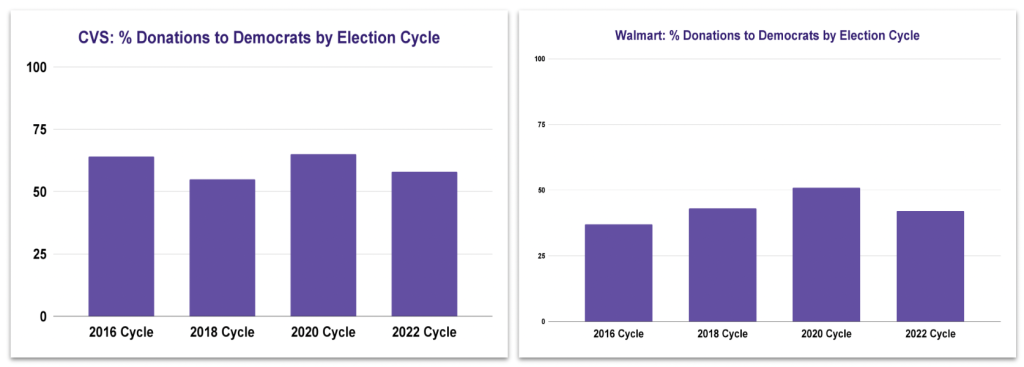
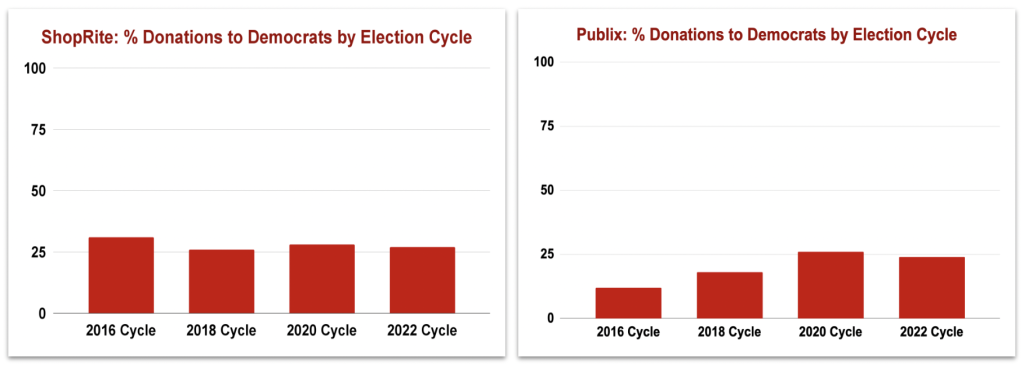
The Political ‘Color’ of Companies: Political donations at similar companies can have the same or different patterns
Donation patterns can sometimes – but not always – differ significantly from company to company, even if they have similar products and business models. Anduril and Palantir, both defense companies, have opposite spending habits despite their similarities as companies. On the other hand, employees of FedEx and UPS show nearly identical donation patterns year after year. So do those at Home Depot and Lowe’s.
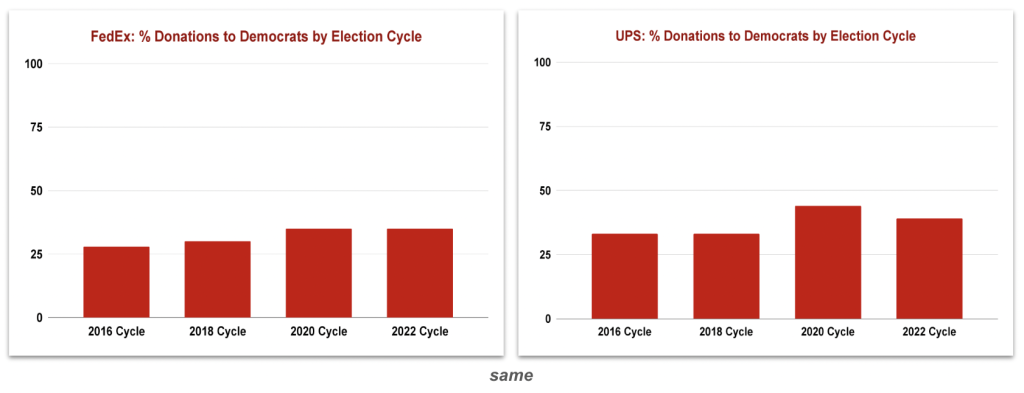
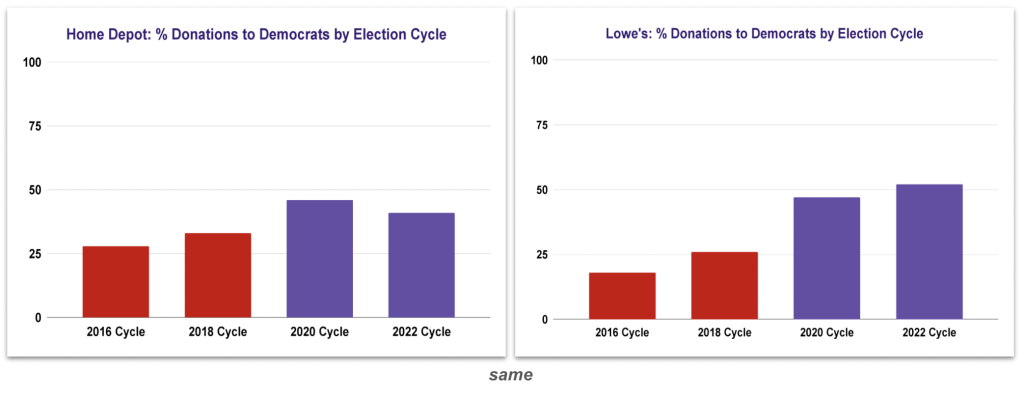
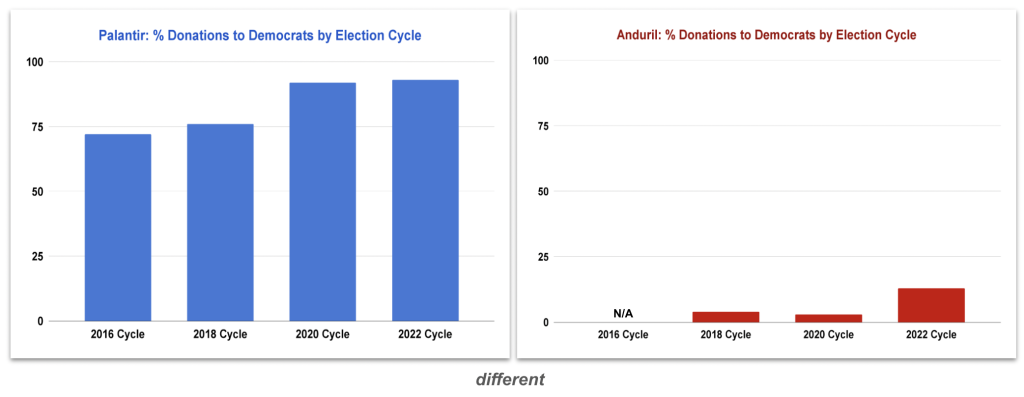
The 2020 “Trump vs. Biden” cycle attracted massive new individual political donations
The 2020 election cycle was marked by a Trump vs. Biden matchup, along with down-ballot battles for narrow control of the U.S. Senate and House. With that came a massive influx of individual contributions, far exceeding donations for any past year on record. Among the 30 retail and restaurant companies we studied, individual donations rose an average of 23% from the 2018 to 2020 cycles, only to return to “baseline” levels in the 2022 cycle (they were also far higher in 2020 than in the 2016 presidential cycle – see graph). Employer PACs, typically, did not shift their spending in 2020 (not shown).
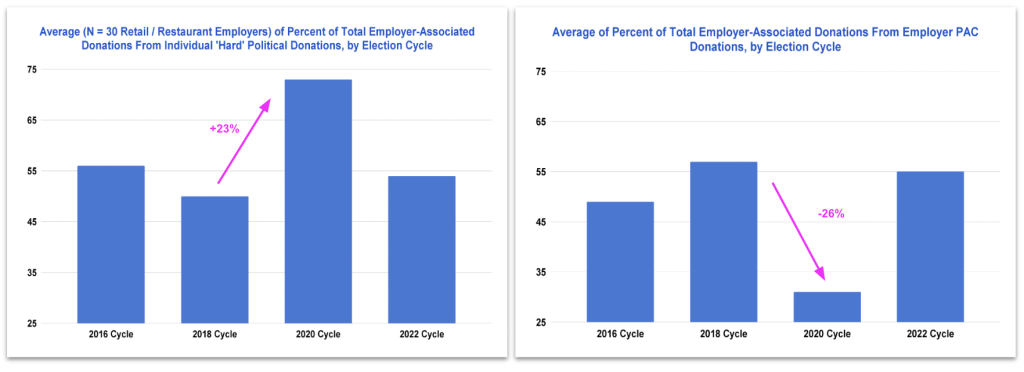
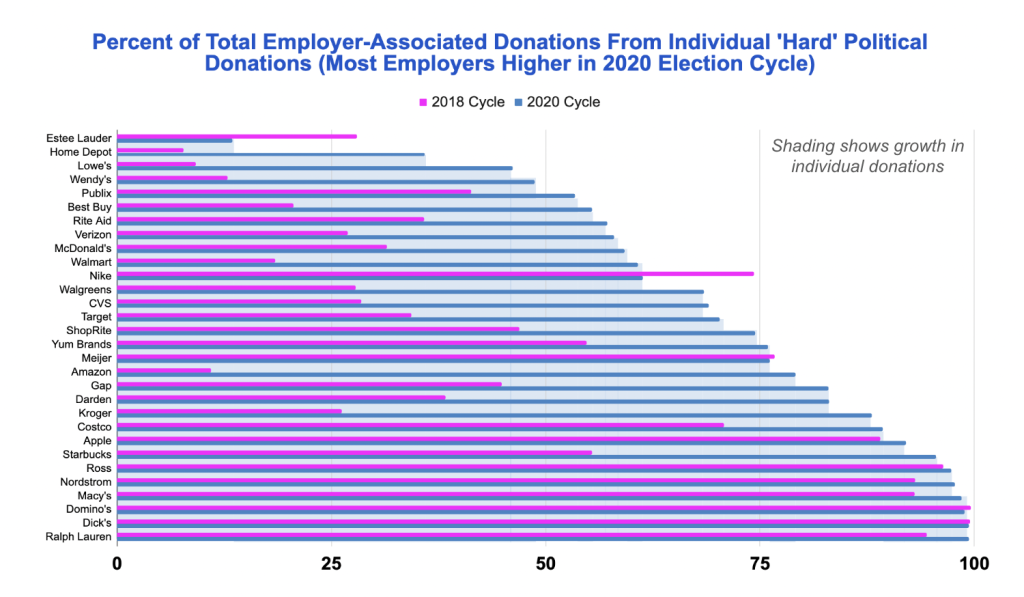
Politics and Pendulum Swings: Individuals from several retail employers “swung” donations in 2020
At the majority of the 30 retailers we studied, the political ‘color’ of the company stayed the same – individuals from companies that were blue/purple/red in 2016 and 2018 stayed that way in 2020, as one would expect by default (null hypothesis). However, at several companies, the huge influx of new individual donations “swung” the overall company’s ‘color’ the opposite way – in other words, red companies became blue during that cycle, or vice versa (see graphs below). Swinging blue was a more common outcome in our sample of companies, though we found examples in each direction.
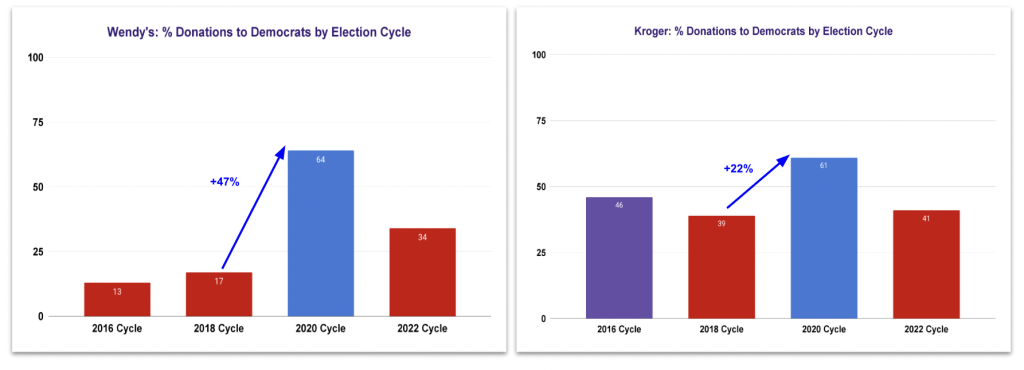


Case Study: Target
In 2018, individual Target employees donated a total of $262,219, with the largest single recipient being the Republican National Committee (RNC) (total of $72,519). Other top recipients were in local Minnesota races, where the company is headquartered. Most of the top recipients were ‘red’. However, in 2020, Target saw a massive increase in individual donations to more than $1,409,833. Joe Biden (‘blue’) received $286,572, Bernie Sanders (independent) received $216,081, and Donald Trump received $92,392. While Target employees swung ‘blue’ (Biden plus the Democratic Senatorial Campaign Committee, or DSCC, and other recipients), note that even the level given to Trump exceeds that of any single recipient in the 2018 midterm cycle, so there are many ways to interpret these data. A basic interpretation is that employees at some employers who aren’t typically donors were very motivated to donate and vote in the 2020 presidential cycle, and many of the newly-motivated donors leaned ‘blue’ (which presumably helped Biden win the election).
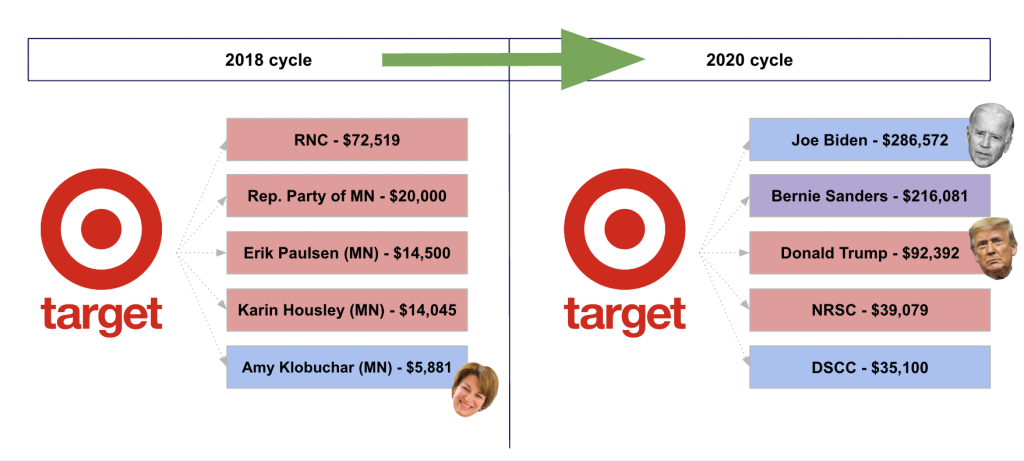
Conclusion
Our preliminary analysis of donations segmented by employer in an initial sample of 30 retail and restaurant companies proved interesting. Analyzing individual donations at the employer level may provide unique insights about donations, campaigns, voters, and employers, particularly with regard to the current 2024 presidential election cycle. However, the full implications of this analysis will not be understood without additional analysis.
Elise Buellesbach is a Research Intern at the Data Catalyst Institute.
